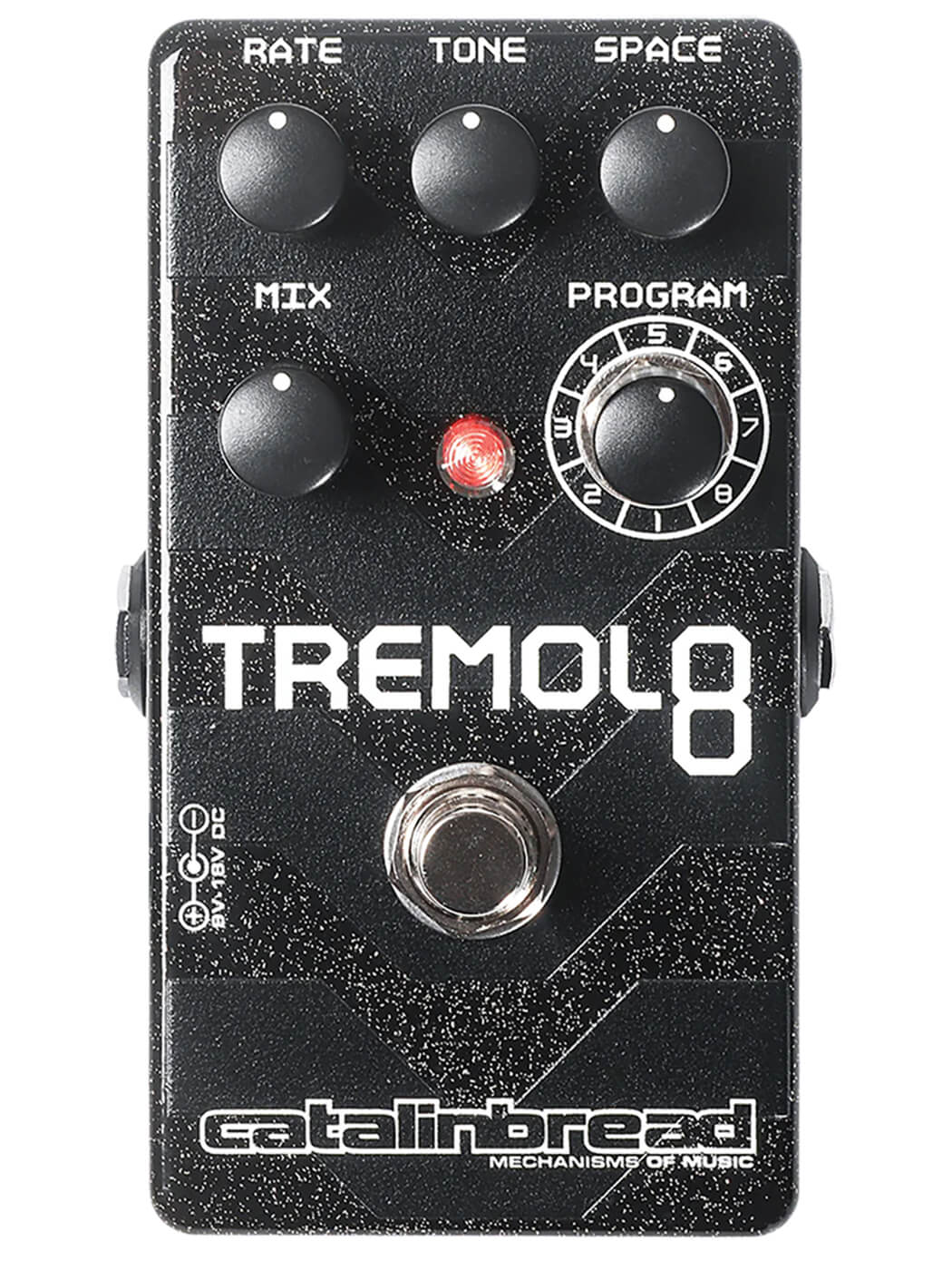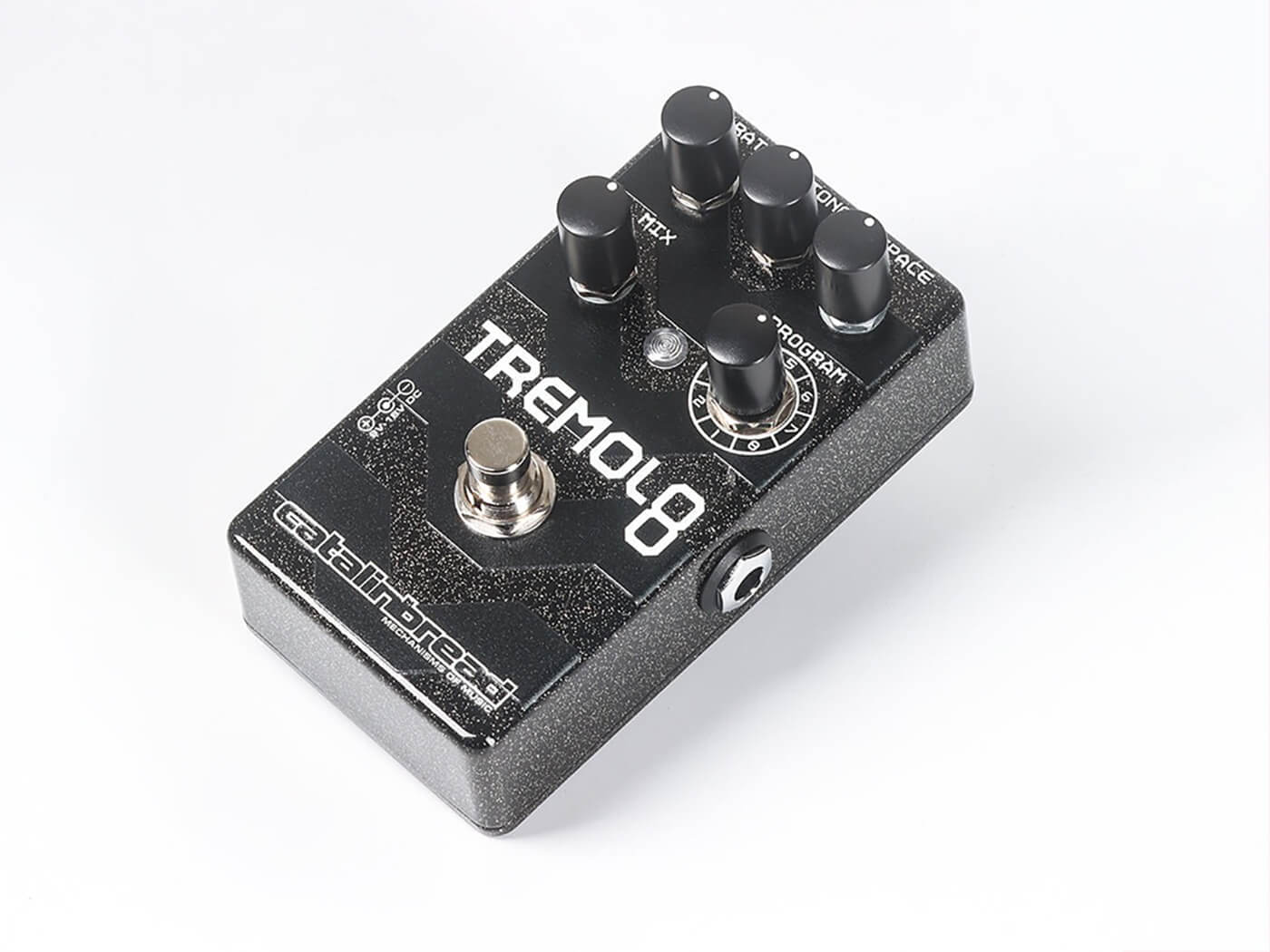Catalinbread Tremol8 review: a thoroughly modern take on the oldest effects pairing of all
This multi-mode tremolo with built-in digital reverb promises an array of sounds way beyond your favourite black-panel amp – and yes, that does include harmonic chewiness…

Catalinbread Tremol8. Image: Catalinbread
Review Overview
Our rating
8
Our verdict
As tasty pairings go, nothing beats rhubarb and custard. But if there’s one duo in the guitar world that comes close, it’s tremolo and reverb – whether that’s on the control panel of a classic mid-60s combo, or in a vintage-voiced digital stompbox like the Strymon Flint.
But is it possible to team up these two great effects in a way that looks forward rather than back? Or to put it another way, is it possible to review the Catalinbread Tremol8 without using the words ‘classic’ and ‘vintage’ (apart from just now)?
It’s the number 8 in the name that holds the key. This is a compact digital tremolo pedal with eight operating modes, each offering a different kind of volume modulation, and each paired with its own complementary flavour of reverb.

The first half of the rotary switch covers the main wave shapes – sine, square and sawtooth – but then we get to a harmonic tremolo based on the second channel of an early-60s Fender Showman amp, a sine wave with added chorus, an envelope-controlled mode that slows down the modulation as notes fade away, and a super-fast square wave for ring modulator effects. The reverbs range from tight and medium-length (in three of the first four modes) to long and ethereal (in harmonic and envelope modes).
Some of the controls change function according to the selected mode, which makes this a much more complex device than the excellent STS-88 flanger and reverb, but you don’t really need to download the manual – the included one-page guide will keep you on track.
And if you’re worried about the perceived drop in volume caused by tremolo chomping out big chunks of your signal, there’s a trimpot inside the pedal for boosting the gain to compensate, along with a switch for true or buffered bypass.
In Use
Before the sounds, some visual notes. Firstly, it’s another moodily monochrome Catalinbread pedal, but there is a champagne sparkle to the black enclosure that looks very handsome. And secondly, in a triumph of creative font use, the name looks like a perfect ‘Tremolo’ if you cover the bottom part of the ‘8’ with your thumb. Nice work.
As to how this thing actually performs, it’s mostly good news so let’s cover the positives first… the main one being the more than slightly significant fact that it sounds lovely. Just as the flanger and reverb in the STS-88 bring out the best in each other, the two effects in the Tremol8 work together in such a way that you soon forget the very possibility of hearing one without the other.
The tremolo in mode 1 has a sweetly natural throb, running into a subtle reverb that adds just enough ambience; mode 2 sounds a little thinner, but makes up for that with a much longer ’verb. The square and sawtooth waves let you get more creative, but it’s only when we hit the Fender Showman emulation that things get seriously lip-smacking. This is a lot less phasey than the harmonic tremolo of something like the Walrus Audio Monument, but there’s enough wobbly asymmetry to give it some real colour – and the reverb here is heee-yuge, which all adds up to ambient soundscaping heaven.

In stark contrast, there’s no reverb at all in the chorus mode – which is another nice sound, though the added modulation sits very low in the mix. The envelope and ring mod algorithms, meanwhile, do their quirky jobs without fuss.
There are, however, some compromises. It’d be nice if the tremolo had a depth control, rather than relying on the master mix knob; you obviously can’t mix and match trem and reverb types at will; different modes have different output levels, so it’s a shame the gain pot is hidden inside the enclosure; and buffered bypass is basically a no-no because it leaves the mix control active when the pedal is off, affecting your signal level and even adding rhythmic hiss.
But hey, as long as you’re cool with true bypass you’re left with a fairly short list of gripes, none of which can detract from the aforementioned loveliness of the Tremolo8’s multiple voices. If you don’t mind eating your rhubarb and custard with a slightly bent spoon, go ahead and tuck in.
Like this? Try these
- Strymon Flint V2 £329
- Fender Tre-Verb £199
- Keeley Verb o Trem £178




